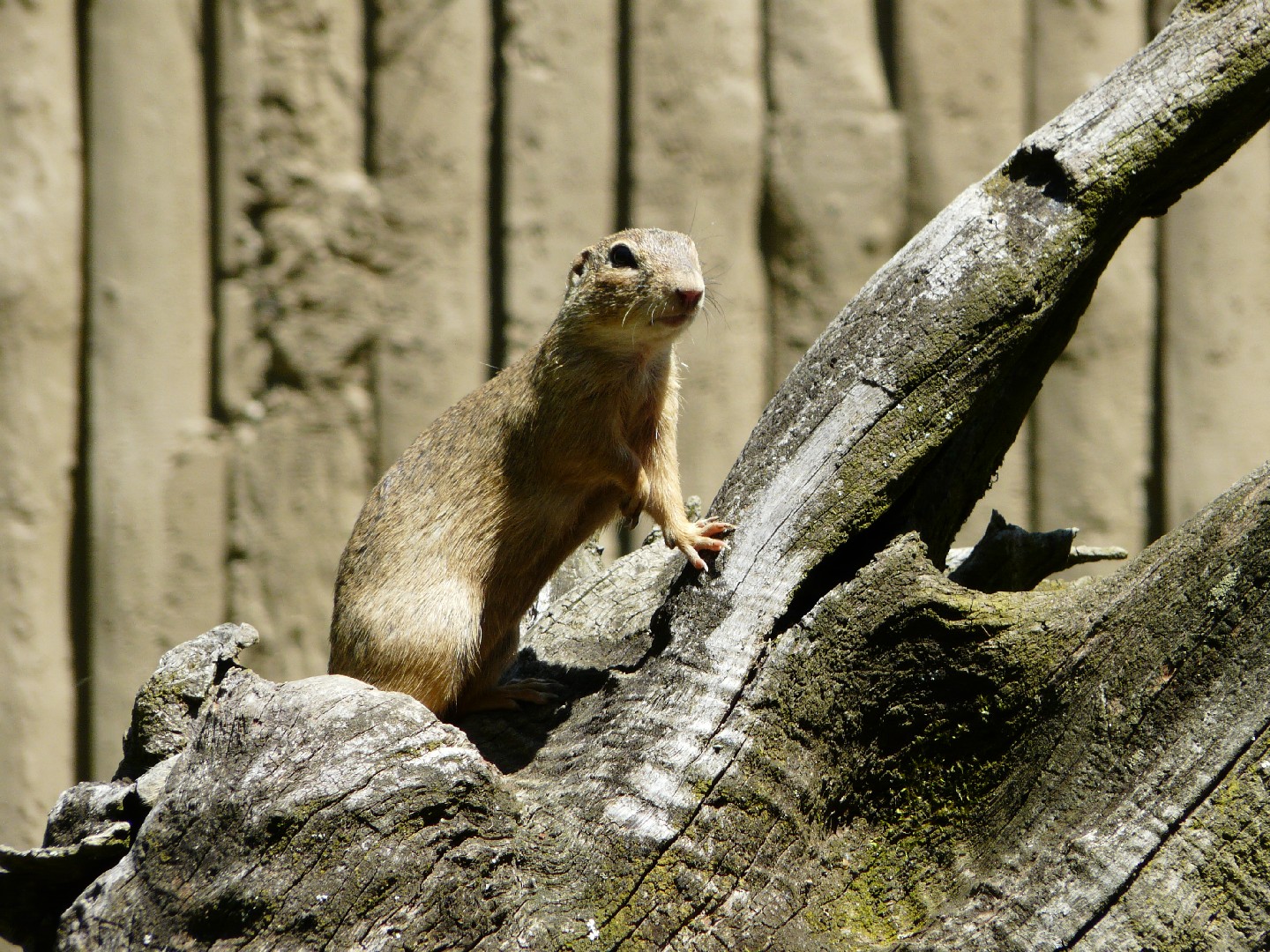European ground squirrel
A species of Seed-lovers, Also known as European squirrel Scientific name : Spermophilus citellus Genus : Seed-lovers
European ground squirrel, A species of Seed-lovers
Also known as:
European squirrel
Scientific name: Spermophilus citellus
Genus: Seed-lovers
Content
Description General Info
 Photo By Père Igor , used under CC-BY-SA-3.0 /Cropped and compressed from original
Photo By Père Igor , used under CC-BY-SA-3.0 /Cropped and compressed from original Description
The European ground squirrel is about the size of a brown rat, with an adult measuring 20 to 23 cm (8 to 9 in) and a weight of 240 to 340 g (8.5 to 12.0 oz). It has a slender build with a short bushy tail. The short dense fur is yellowish-grey, tinged with red, with a few indistinct pale and dark spots on the back. The underside is pale with a sandy-coloured abdomen. The large dark eyes are placed high on the head and the small, rounded ears are hidden in the fur. The dental formula is 1/1, 0/0, 2/1, 3/3. The legs are powerful with sharp claws well adapted for digging. Males are slightly larger than females otherwise they look alike. The European ground squirrel has a shrill alarm call that will cause all other individuals in the vicinity to dive for cover. It also makes various soft chirruping and growling noises. The European ground squirrel could be confused with the speckled ground squirrel which occurs in Poland (Lublin Voivodeship), Romania, Russia, Belarus and Ukraine, but that species has dark brown fur spotted with white and a thin tail and lives in areas with coarser vegetation. 
General Info
Lifespan
6-12 years
Diet
European ground squirrel's diet primarily consists of plant material, which it actively forages for above ground. An herbivore, it favors seeds, leaves, fruits, flowers, and grass, with a particular preference for cultivated crops when available.
Behavior
European ground squirrel is a diurnal, hibernating rodent that spends most of its active period foraging and grooming. Socially, it lives in colonies with defined territorial boundaries, which are fiercely defended. Notably, european ground squirrel’s communication involves various calls and tail signals particularly used in monitoring predator threats.
Population
Decreasing
Scientific Classification
Phylum
Chordates Class
Mammals Order
Gnawing mammals Family
Squirrels Genus
Seed-lovers Species
European ground squirrel